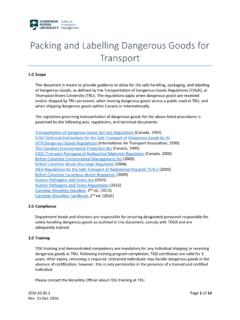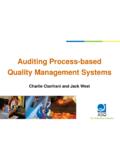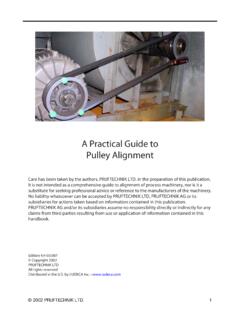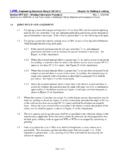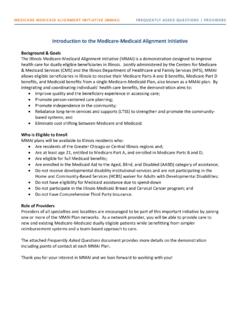Transcription of Constructive alignment in university teaching
1 HERDSA Review of Higher Education Vol. 1, Constructive alignment in university teaching John Biggs* university of Hong Kong, Hong Kong & university of Tasmania, Australia Constructive alignment (CA) is an outcomes-based approach to teaching in which the learning outcomes that students are intended to achieve are defined before teaching takes place. teaching and assessment methods are then designed to best achieve those outcomes and to assess the standard at which they have been achieved. Although the general idea of CA has been around for some time, it is only recently that it has been implemented on a reasonably large scale.
2 Part of the reason for this is that the massive expansion in tertiary education involves a diverse range of students and of teaching subjects so that teaching and assessment need to be reviewed on an institution-wide basis with emphasis upon outcomes at institutional, programme and unit levels. CA provides a framework for adjusting teaching and assessment to address the attainment of those outcomes and the standards reached. Research indicates that CA is effective in this but it initially requires time and effort in designing teaching and assessment and, as a systems approach, it is important that supporting institutional policies and procedures are in place.
3 CA properly implemented enhances teaching and learning quality and thus, as a form of quality enhancement, subsumes forms of quality assurance that can often be counter-productive. Keywords: outcomes-based; Constructive alignment ; quality enhancement. 1. Introduction Constructive alignment (CA) is a design for teaching in which what it is intended students should learn, and how they should express their learning, is clearly stated before teaching takes place. teaching is then designed to engage students in learning activities that optimise their chances of achieving * Email: John Biggs 6 those outcomes, and assessment tasks are designed to enable clear judgments as to how well those outcomes have been attained.
4 Such a teaching design is assumed in everyday learning. For example, a mother teaching her child how to tie a shoelace focuses on that outcome, takes the child through the motions of tying a lace until the act of tying can be carried out satisfactorily by the child. Likewise, a learner driver learns through the act of driving itself until the specified standard is reached. In each case, the target act is at once the intended outcome, the method of teaching , and the means of assessing whether the desired criterion or standard of the outcome has been met. This approach to teaching is learner-centred in that the target is what the learner has to achieve and how the learner may best be engaged in order to achieve it to the required standard.
5 The teaching design is outcomes-based and assessment is necessarily criterion-referenced. teaching in institutions on the other hand has traditionally been conceived in precisely the opposite manner on all counts: teaching is teacher-centred, the focus being on what content the teacher has to cover , teaching is largely held constant with lecturing the default method, and assessment is norm-referenced. Until very recently most universities adhered to this teacher-centred design. 2. The history of the concept of Constructive alignment The essential ideas underlying Constructive alignment were proposed over sixty years ago. In his best-selling Basic principles of curriculum and instruction, Ralph Tyler asked four questions: 1) What educational purposes should the school seek to attain?
6 2) What educational experiences can be provided that are likely to attain these purposes? 3) How can these educational experiences be effectively organised? 4) How can we determine whether these purposes are being attained? (Tyler, 1949: 1) The most useful way of stating curriculum objectives, he said, is to express them in terms that identify both the kind of behaviour to be developed and the context or area of life in which this behaviour is to operate. He also said famously: Learning takes place through the active behaviour of the student: it is what he (sic) does that he learns, not what the teacher does. (op. cit. p. 63).
7 HERDSA Review of Higher Education 7 Tyler s book went to 36 editions and was a basic text in almost every teaching education institution in the United States. He appeared on numerous advisory committees in relation to school education, and was regarded as the father of teaching objectives and undoubtedly influenced his university of Chicago colleague, Benjamin Bloom, in Bloom s notion of mastery learning (Bloom, Hastings & Madaus, 1971). In retrospect, however, he appears to have had little enduring influence at school level, and virtually none at all in higher education, apart perhaps from the Keller Plan, which is a form of mastery learning (Keller, 1968).
8 Thomas Shuell later restated Tyler as follows: If students are to learn desired outcomes in a reasonably effective manner, then the teacher s fundamental task is to get students to engage in learning activities that are likely to result in their achieving those outcomes.. It is helpful to remember that what the student does is actually more important in determining what is learned than what the teacher does. (Shuell, 1986, p. 429) This seemingly motherhood statement is exactly that: it reminds us that in institutional learning and teaching we should go back to the teaching model that is indeed used by mothers. That is, teachers should focus on what outcomes students are meant to achieve and help them to do so, which almost always means something other than talking for an hour while the learner takes notes.
9 In my final year of teaching before retiring, I decided to unpack Shuell s statement into a teaching model for an evening unit in a part-time BEd course. This unit, The nature of teaching and learning, was about how knowledge of psychology might improve teaching . I had just returned from a sabbatical in Canada, where I had been impressed with authentic assessment by portfolio in elementary schools. Previously, I had been teaching psychology in the usual way: teaching topics within the areas of learning, motivation, and child development, and then setting assignments about how well the students had understood the topics and what they saw the implications to be for teaching practice.
10 I now saw that I had been teaching and assessing declarative knowledge, which was inauthentic to the purpose of the unit. The students weren t there to learn about psychology, they were there to learn psychology in order to make better teaching decisions. These students were teachers during the day, so I decided to assess them on how well they could demonstrate that psychology had indeed improved their teaching . The assessment required them to compile a portfolio of examples of where they thought their teaching had been so John Biggs 8 improved. We negotiated a series of learning activities that were likely to result in their achieving those outcomes, such as reading set material, raising questions in class about that material, discussing with other students, swapping notes with a learning partner and keeping a reflective journal.
